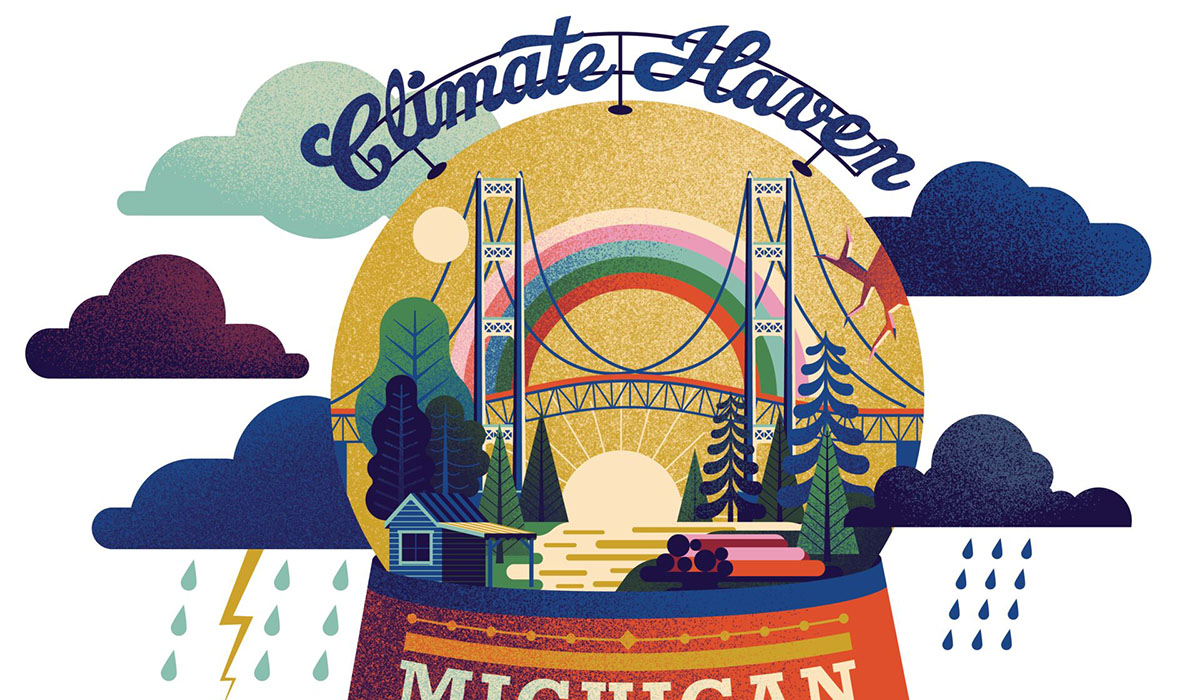“The Rock” at the corner of Washtenaw Avenue and Hill Street famously undergoes weekly makeovers as University students and local residents paint messages for causes, concerns, and celebrations. With so much change, it’s easy to forget that under all the layers is a large-but-humble chunk of limestone, pictured above on its triangular plot in Ann Arbor circa 1938.
During his long tenure as the city’s parks superintendent from 1919-61, Eli A. Gallup, 1915, MF1916, purposefully placed many boulders across the Ann Arbor landscape, with The Rock being the most famous. According to a 1991 Ann Arbor Observer article, Gallup chanced across the limestone specimen at a county landfill on Dhu Varren Road near Pontiac Trail in 1932 (the area now known as Olson Park). As the nation celebrated the bicentennial of George Washington’s birth, Gallup was inspired to utilize The Rock as a permanent memorial. Gallup chose the spot at Washtenaw and Hill, according to a 1972 Ann Arbor News article, for its visibility.
The city council approved and allocated $15 in funding, which was joined by the local Daughters of the American Revolution chapter covering further expenses for the excavation operation. The land at Washtenaw and Hill was owned by retired U-M Dental School professor Louis Phillips Hall, DDS1889, who donated it to the city; the plot was christened George Washington Park. Regional electricity company Detroit Edison (now DTE Energy) donated the use of a platform truck to move the boulder.
In February 1932, with the ground frozen enough to support the truck and the workers excavating The Rock, the operation was successfully carried out. The Rock was placed upon a foundation prepared earlier that contained a time capsule with items detailing The Rock’s story. In 1939, a shield-shaped plaque formed of copper and other scavenged metals was forged by students at University High School—including Gallup’s first son, Bill, ’51—and added to The Rock, reading: “To George Washington this memorial erected in celebration of the two hundredth anniversary of his birth, 1932.”
The tradition—sometimes intended and/or viewed as graffiti or vandalism—of painting The Rock began sometime in the mid-1950s. Rozella Twining, a nearby resident, wrote to the Ann Arbor News in 1987 to give possibly the earliest account of someone putting color to the limestone:
“About 30 years ago my husband, Herb, and I were returning from Farmers Market on the Saturday morning of THE game. And there on our lovely rock … were three big green letters: M.S.U. My husband nearly jumped from his car. He had seen nothing so scandalous in his lifetime.”
Despite the possibly Spartan origin and attempts made to keep The Rock clear and dissuade further decoration, the tradition grew and persists to this day.
For a more intimate look at the mining and placement of The Rock, view this direct 1932 footage of the process, narrated by Gallup’s younger son, Albert, MA’57, in a 2011 retrospective produced by the Washtenaw County Historical Society.
Gregory Lucas-Myers, ’10, is the senior assistant editor of Michigan Alum.





